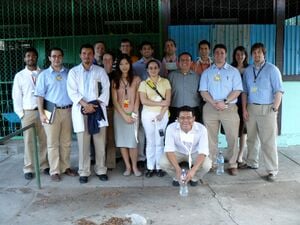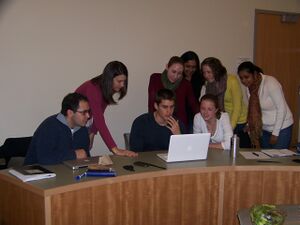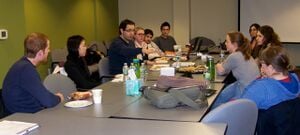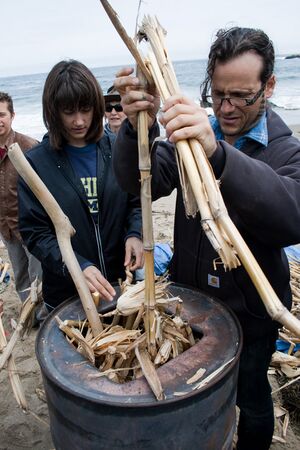Loading map...
{"format":"leaflet","minzoom":false,"maxzoom":false,"limit":99999,"offset":0,"link":"all","sort":[""],"order":[],"headers":"show","mainlabel":"","intro":"","outro":"","searchlabel":"\u003Cspan class=\"mw-ui-button\" style=\"margin: .5em 0;\"\u003EMore results\u003C/span\u003E","default":"","import-annotation":false,"width":"auto","height":"350px","centre":false,"title":"","label":"","icon":"","lines":[],"polygons":[],"circles":[],"rectangles":[],"copycoords":false,"static":false,"zoom":false,"defzoom":14,"layers":["OpenStreetMap"],"image layers":[],"overlays":[],"resizable":false,"fullscreen":false,"scrollwheelzoom":true,"cluster":true,"clustermaxzoom":20,"clusterzoomonclick":true,"clustermaxradius":80,"clusterspiderfy":true,"geojson":"","clicktarget":"","showtitle":true,"hidenamespace":true,"template":"","userparam":"","activeicon":"","pagelabel":false,"ajaxcoordproperty":"","ajaxquery":"","locations":[{"text":"\u003Cb\u003E\u003Ca href=\"/2_FT_Prosthetics\" title=\"2 FT Prosthetics\"\u003E2 FT Prosthetics\u003C/a\u003E\u003C/b\u003E","title":"2 FT Prosthetics","link":"","lat":39.42251944444399924805111368186771869659423828125,"lon":-111.7143583333299972082386375404894351959228515625,"icon":""},{"text":"\u003Cb\u003E\u003Ca href=\"/3D_printed_otoscope\" title=\"3D printed otoscope\"\u003E3D printed otoscope\u003C/a\u003E\u003C/b\u003E","title":"3D printed otoscope","link":"","lat":43.621194444444000737348687835037708282470703125,"lon":-84.68243333333299460718990303575992584228515625,"icon":""},{"text":"\u003Cb\u003E\u003Ca href=\"/ANSiscope\" title=\"ANSiscope\"\u003EANSiscope\u003C/a\u003E\u003C/b\u003E","title":"ANSiscope","link":"","lat":36.70146388888900190750064211897552013397216796875,"lon":-118.755997222220003095571883022785186767578125,"icon":""},{"text":"\u003Cb\u003E\u003Ca href=\"/Acuset_IV_Flow_Controller\" title=\"Acuset IV Flow Controller\"\u003EAcuset IV Flow Controller\u003C/a\u003E\u003C/b\u003E","title":"Acuset IV Flow Controller","link":"","lat":-41.50008333333300214462724397890269756317138671875,"lon":172.834408333330003415539977140724658966064453125,"icon":""},{"text":"\u003Cb\u003E\u003Ca href=\"/Adjustable_Bicycle_Limb\" title=\"Adjustable Bicycle Limb\"\u003EAdjustable Bicycle Limb\u003C/a\u003E\u003C/b\u003E","title":"Adjustable Bicycle Limb","link":"","lat":50.00067777777800159810794866643846035003662109375,"lon":-86.0009777777780044516475754790008068084716796875,"icon":""},{"text":"\u003Cb\u003E\u003Ca href=\"/Aerosol_Oxytocin_Delivery_System\" title=\"Aerosol Oxytocin Delivery System\"\u003EAerosol Oxytocin Delivery System\u003C/a\u003E\u003C/b\u003E","title":"Aerosol Oxytocin Delivery System","link":"","lat":-37.91422222222200133501246455125510692596435546875,"lon":145.126855555560013044669176451861858367919921875,"icon":""},{"text":"\u003Cb\u003E\u003Ca href=\"/Amplified_Fluorescence_by_Transmitted_Excitation_of_Radiation_(AFTER)\" title=\"Amplified Fluorescence by Transmitted Excitation of Radiation (AFTER)\"\u003EAmplified Fluorescence by Transmitted Excitation of Radiation (AFTER)\u003C/a\u003E\u003C/b\u003E","title":"Amplified Fluorescence by Transmitted Excitation of Radiation (AFTER)","link":"","lat":42.378877777778001245678751729428768157958984375,"lon":-72.032366666667002164103905670344829559326171875,"icon":""},{"text":"\u003Cb\u003E\u003Ca href=\"/Anti-Shock_Garment_(aka_Life_Wrap)\" title=\"Anti-Shock Garment (aka Life Wrap)\"\u003EAnti-Shock Garment (aka Life Wrap)\u003C/a\u003E\u003C/b\u003E","title":"Anti-Shock Garment (aka Life Wrap)","link":"","lat":39.78373055555599790977794327773153781890869140625,"lon":-100.4458833333300020740352920256555080413818359375,"icon":""},{"text":"\u003Cb\u003E\u003Ca href=\"/Antiretroviral_Pouch\" title=\"Antiretroviral Pouch\"\u003EAntiretroviral Pouch\u003C/a\u003E\u003C/b\u003E","title":"Antiretroviral Pouch","link":"","lat":35.67296388888900082747568376362323760986328125,"lon":-79.03929166666699757115566171705722808837890625,"icon":""},{"text":"\u003Cb\u003E\u003Ca href=\"/Assisted_delivery_device\" title=\"Assisted delivery device\"\u003EAssisted delivery device\u003C/a\u003E\u003C/b\u003E","title":"Assisted delivery device","link":"","lat":43.621194444444000737348687835037708282470703125,"lon":-84.68243333333299460718990303575992584228515625,"icon":""},{"text":"\u003Cb\u003E\u003Ca href=\"/Automatically_Deflating_Air_Postpartum_Tamponade_(ADAPT)\" title=\"Automatically Deflating Air Postpartum Tamponade (ADAPT)\"\u003EAutomatically Deflating Air Postpartum Tamponade (ADAPT)\u003C/a\u003E\u003C/b\u003E","title":"Automatically Deflating Air Postpartum Tamponade (ADAPT)","link":"","lat":39.78373055555599790977794327773153781890869140625,"lon":-100.4458833333300020740352920256555080413818359375,"icon":""},{"text":"\u003Cb\u003E\u003Ca href=\"/BD_SoloShot_LX\" title=\"BD SoloShot LX\"\u003EBD SoloShot LX\u003C/a\u003E\u003C/b\u003E","title":"BD SoloShot LX","link":"","lat":40.07573888888899915627916925586760044097900390625,"lon":-74.404161111110994397677131928503513336181640625,"icon":""},{"text":"\u003Cb\u003E\u003Ca href=\"/BIRTHweigh_III\" title=\"BIRTHweigh III\"\u003EBIRTHweigh III\u003C/a\u003E\u003C/b\u003E","title":"BIRTHweigh III","link":"","lat":47.286836111111000491291633807122707366943359375,"lon":-120.2126138888900044321417226456105709075927734375,"icon":""},{"text":"\u003Cb\u003E\u003Ca href=\"/Baby_Bubbler\" title=\"Baby Bubbler\"\u003EBaby Bubbler\u003C/a\u003E\u003C/b\u003E","title":"Baby Bubbler","link":"","lat":31.26389166666699992447320255450904369354248046875,"lon":-98.5456111111110004685542662627995014190673828125,"icon":""},{"text":"\u003Cb\u003E\u003Ca href=\"/Baby_CPAP\" title=\"Baby CPAP\"\u003EBaby CPAP\u003C/a\u003E\u003C/b\u003E","title":"Baby CPAP","link":"","lat":50.72414166666700197083628154359757900238037109375,"lon":-3.66077777777779989065720656071789562702178955078125,"icon":""},{"text":"\u003Cb\u003E\u003Ca href=\"/Baby_Monitor\" title=\"Baby Monitor\"\u003EBaby Monitor\u003C/a\u003E\u003C/b\u003E","title":"Baby Monitor","link":"","lat":40.7127277777779994494267157278954982757568359375,"lon":-74.0060138888890008956877863965928554534912109375,"icon":""},{"text":"\u003Cb\u003E\u003Ca href=\"/Bakri_SOS_Balloon\" title=\"Bakri SOS Balloon\"\u003EBakri SOS Balloon\u003C/a\u003E\u003C/b\u003E","title":"Bakri SOS Balloon","link":"","lat":38.47584166666700156156366574577987194061279296875,"lon":-80.8408416666670035510833258740603923797607421875,"icon":""},{"text":"\u003Cb\u003E\u003Ca href=\"/Bi-Directional_Membrane_for_Child_Delivery\" title=\"Bi-Directional Membrane for Child Delivery\"\u003EBi-Directional Membrane for Child Delivery\u003C/a\u003E\u003C/b\u003E","title":"Bi-Directional Membrane for Child Delivery","link":"","lat":30.870388888888999900927956332452595233917236328125,"lon":-92.007125000000002046363078989088535308837890625,"icon":""},{"text":"\u003Cb\u003E\u003Ca href=\"/BiliSol_Phototherapy_System\" title=\"BiliSol Phototherapy System\"\u003EBiliSol Phototherapy System\u003C/a\u003E\u003C/b\u003E","title":"BiliSol Phototherapy System","link":"","lat":35.67296388888900082747568376362323760986328125,"lon":-79.03929166666699757115566171705722808837890625,"icon":""},{"text":"\u003Cb\u003E\u003Ca href=\"/Bilibed\" title=\"Bilibed\"\u003EBilibed\u003C/a\u003E\u003C/b\u003E","title":"Bilibed","link":"","lat":15.926666666666999816470706718973815441131591796875,"lon":107.96508611110999709126190282404422760009765625,"icon":""},{"text":"\u003Cb\u003E\u003Ca href=\"/BluLine_Phototherapy\" title=\"BluLine Phototherapy\"\u003EBluLine Phototherapy\u003C/a\u003E\u003C/b\u003E","title":"BluLine Phototherapy","link":"","lat":35.67296388888900082747568376362323760986328125,"lon":-79.03929166666699757115566171705722808837890625,"icon":""},{"text":"\u003Cb\u003E\u003Ca href=\"/Brass-V\" title=\"Brass-V\"\u003EBrass-V\u003C/a\u003E\u003C/b\u003E","title":"Brass-V","link":"","lat":15.8572666666669999102623478393070399761199951171875,"lon":74.5069333333329950619372539222240447998046875,"icon":""},{"text":"\u003Cb\u003E\u003Ca href=\"/Breath_of_Life_CPAP\" title=\"Breath of Life CPAP\"\u003EBreath of Life CPAP\u003C/a\u003E\u003C/b\u003E","title":"Breath of Life CPAP","link":"","lat":15.926666666666999816470706718973815441131591796875,"lon":107.96508611110999709126190282404422760009765625,"icon":""},{"text":"\u003Cb\u003E\u003Ca href=\"/Brilliance\" title=\"Brilliance\"\u003EBrilliance\u003C/a\u003E\u003C/b\u003E","title":"Brilliance","link":"","lat":22.351113888888999525761391851119697093963623046875,"lon":78.6677416666669984124382608570158481597900390625,"icon":""},{"text":"\u003Cb\u003E\u003Ca href=\"/Burnell_Ventouse\" title=\"Burnell Ventouse\"\u003EBurnell Ventouse\u003C/a\u003E\u003C/b\u003E","title":"Burnell Ventouse","link":"","lat":54.7023555555559966023793094791471958160400390625,"lon":-3.276574999999999793232063893810845911502838134765625,"icon":""},{"text":"\u003Cb\u003E\u003Ca href=\"/CD4_Initiative_Test\" title=\"CD4 Initiative Test\"\u003ECD4 Initiative Test\u003C/a\u003E\u003C/b\u003E","title":"CD4 Initiative Test","link":"","lat":51.50744444444399761096065049059689044952392578125,"lon":-0.1277666666666699979426624622647068463265895843505859375,"icon":""},{"text":"\u003Cb\u003E\u003Ca href=\"/CO2-Baited_CDC_Light_Trap\" title=\"CO2-Baited CDC Light Trap\"\u003ECO2-Baited CDC Light Trap\u003C/a\u003E\u003C/b\u003E","title":"CO2-Baited CDC Light Trap","link":"","lat":1.4419694444444000058780375184142030775547027587890625,"lon":38.4313972222220030516837141476571559906005859375,"icon":""},{"text":"\u003Cb\u003E\u003Ca href=\"/CPD_risk_assessment_device\" title=\"CPD risk assessment device\"\u003ECPD risk assessment device\u003C/a\u003E\u003C/b\u003E","title":"CPD risk assessment device","link":"","lat":36.70146388888900190750064211897552013397216796875,"lon":-118.755997222220003095571883022785186767578125,"icon":""},{"text":"\u003Cb\u003E\u003Ca href=\"/CRADLE\" title=\"CRADLE\"\u003ECRADLE\u003C/a\u003E\u003C/b\u003E","title":"CRADLE","link":"","lat":51.48933333333300055301151587627828121185302734375,"lon":-0.144055555555559988700764506575069390237331390380859375,"icon":""},{"text":"\u003Cb\u003E\u003Ca href=\"/Cell_Phone_Malaria_Detector\" title=\"Cell Phone Malaria Detector\"\u003ECell Phone Malaria Detector\u003C/a\u003E\u003C/b\u003E","title":"Cell Phone Malaria Detector","link":"","lat":55.86115555555600309389774338342249393463134765625,"lon":-4.25016944444440003536556105245836079120635986328125,"icon":""},{"text":"\u003Cb\u003E\u003Ca href=\"/Cell_phone_based_referral_platform_for_maternal_health\" title=\"Cell phone based referral platform for maternal health\"\u003ECell phone based referral platform for maternal health\u003C/a\u003E\u003C/b\u003E","title":"Cell phone based referral platform for maternal health","link":"","lat":43.621194444444000737348687835037708282470703125,"lon":-84.68243333333299460718990303575992584228515625,"icon":""},{"text":"\u003Cb\u003E\u003Ca href=\"/Cell_phone-based_intelligent_biometrics\" title=\"Cell phone-based intelligent biometrics\"\u003ECell phone-based intelligent biometrics\u003C/a\u003E\u003C/b\u003E","title":"Cell phone-based intelligent biometrics","link":"","lat":54.092444444443998463611933402717113494873046875,"lon":12.12861388888899938365284469909965991973876953125,"icon":""},{"text":"\u003Cb\u003E\u003Ca href=\"/CellScope\" title=\"CellScope\"\u003ECellScope\u003C/a\u003E\u003C/b\u003E","title":"CellScope","link":"","lat":36.70146388888900190750064211897552013397216796875,"lon":-118.755997222220003095571883022785186767578125,"icon":""},{"text":"\u003Cb\u003E\u003Ca href=\"/Ceramic_Cord_Scissors\" title=\"Ceramic Cord Scissors\"\u003ECeramic Cord Scissors\u003C/a\u003E\u003C/b\u003E","title":"Ceramic Cord Scissors","link":"","lat":27.756766666667001430823802365921437740325927734375,"lon":-81.463983333333004566156887449324131011962890625,"icon":""},{"text":"\u003Cb\u003E\u003Ca href=\"/CerviScope\" title=\"CerviScope\"\u003ECerviScope\u003C/a\u003E\u003C/b\u003E","title":"CerviScope","link":"","lat":35.67296388888900082747568376362323760986328125,"lon":-79.03929166666699757115566171705722808837890625,"icon":""},{"text":"\u003Cb\u003E\u003Ca href=\"/ClearVue\" title=\"ClearVue\"\u003EClearVue\u003C/a\u003E\u003C/b\u003E","title":"ClearVue","link":"","lat":52.24349722222199687848842586390674114227294921875,"lon":5.63432222222219980523050253395922482013702392578125,"icon":""},{"text":"\u003Cb\u003E\u003Ca href=\"/Clinitek_Microalbumin_Strips\" title=\"Clinitek Microalbumin Strips\"\u003EClinitek Microalbumin Strips\u003C/a\u003E\u003C/b\u003E","title":"Clinitek Microalbumin Strips","link":"","lat":46.6033527777779994494267157278954982757568359375,"lon":1.88833333333329989045523689128458499908447265625,"icon":""},{"text":"\u003Cb\u003E\u003Ca href=\"/Cloth_(Sari)_Filtration\" title=\"Cloth (Sari) Filtration\"\u003ECloth (Sari) Filtration\u003C/a\u003E\u003C/b\u003E","title":"Cloth (Sari) Filtration","link":"","lat":-0.286497222222220015996896336218924261629581451416015625,"lon":36.0514222222220013236437807790935039520263671875,"icon":""},{"text":"\u003Cb\u003E\u003Ca href=\"/Comet\" title=\"Comet\"\u003EComet\u003C/a\u003E\u003C/b\u003E","title":"Comet","link":"","lat":36.70146388888900190750064211897552013397216796875,"lon":-118.755997222220003095571883022785186767578125,"icon":""},{"text":"\u003Cb\u003E\u003Ca href=\"/Congo_Red_Dot_Test\" title=\"Congo Red Dot Test\"\u003ECongo Red Dot Test\u003C/a\u003E\u003C/b\u003E","title":"Congo Red Dot Test","link":"","lat":41.6500194444439983953998307697474956512451171875,"lon":-72.7342166666669953656310099177062511444091796875,"icon":""},{"text":"\u003Cb\u003E\u003Ca href=\"/CooKit\" title=\"CooKit\"\u003ECooKit\u003C/a\u003E\u003C/b\u003E","title":"CooKit","link":"","lat":39.78373055555599790977794327773153781890869140625,"lon":-100.4458833333300020740352920256555080413818359375,"icon":""},{"text":"\u003Cb\u003E\u003Ca href=\"/Crystal_VC\" title=\"Crystal VC\"\u003ECrystal VC\u003C/a\u003E\u003C/b\u003E","title":"Crystal VC","link":"","lat":46.6033527777779994494267157278954982757568359375,"lon":1.88833333333329989045523689128458499908447265625,"icon":""},{"text":"\u003Cb\u003E\u003Ca href=\"/D-tree_Mobile_Health_Algorithm\" title=\"D-tree Mobile Health Algorithm\"\u003ED-tree Mobile Health Algorithm\u003C/a\u003E\u003C/b\u003E","title":"D-tree Mobile Health Algorithm","link":"","lat":42.378877777778001245678751729428768157958984375,"lon":-72.032366666667002164103905670344829559326171875,"icon":""},{"text":"\u003Cb\u003E\u003Ca href=\"/Daktari_CD4\" title=\"Daktari CD4\"\u003EDaktari CD4\u003C/a\u003E\u003C/b\u003E","title":"Daktari CD4","link":"","lat":42.378877777778001245678751729428768157958984375,"lon":-72.032366666667002164103905670344829559326171875,"icon":""},{"text":"\u003Cb\u003E\u003Ca href=\"/DeNovo_Meter\" title=\"DeNovo Meter\"\u003EDeNovo Meter\u003C/a\u003E\u003C/b\u003E","title":"DeNovo Meter","link":"","lat":42.378877777778001245678751729428768157958984375,"lon":-72.032366666667002164103905670344829559326171875,"icon":""},{"text":"\u003Cb\u003E\u003Ca href=\"/Diamedica_Portable_Anaesthesia_System\" title=\"Diamedica Portable Anaesthesia System\"\u003EDiamedica Portable Anaesthesia System\u003C/a\u003E\u003C/b\u003E","title":"Diamedica Portable Anaesthesia System","link":"","lat":54.7023555555559966023793094791471958160400390625,"lon":-3.276574999999999793232063893810845911502838134765625,"icon":""},{"text":"\u003Cb\u003E\u003Ca href=\"/DoubleCheckGold_HIV_1\" title=\"DoubleCheckGold HIV 1\"\u003EDoubleCheckGold HIV 1\u003C/a\u003E\u003C/b\u003E","title":"DoubleCheckGold HIV 1","link":"","lat":30.812425000000001062971932697109878063201904296875,"lon":34.859475000000003319655661471188068389892578125,"icon":""},{"text":"\u003Cb\u003E\u003Ca href=\"/Draper_TB_Breathalyzer\" title=\"Draper TB Breathalyzer\"\u003EDraper TB Breathalyzer\u003C/a\u003E\u003C/b\u003E","title":"Draper TB Breathalyzer","link":"","lat":42.378877777778001245678751729428768157958984375,"lon":-72.032366666667002164103905670344829559326171875,"icon":""},{"text":"\u003Cb\u003E\u003Ca href=\"/E-Nose\" title=\"E-Nose\"\u003EE-Nose\u003C/a\u003E\u003C/b\u003E","title":"E-Nose","link":"","lat":28.6138944444439999870155588723719120025634765625,"lon":77.2090055555560041966600692830979824066162109375,"icon":""},{"text":"\u003Cb\u003E\u003Ca href=\"/EB1_Foot\" title=\"EB1 Foot\"\u003EEB1 Foot\u003C/a\u003E\u003C/b\u003E","title":"EB1 Foot","link":"","lat":47.286836111111000491291633807122707366943359375,"lon":-120.2126138888900044321417226456105709075927734375,"icon":""},{"text":"\u003Cb\u003E\u003Ca href=\"/EC-Kit\" title=\"EC-Kit\"\u003EEC-Kit\u003C/a\u003E\u003C/b\u003E","title":"EC-Kit","link":"","lat":42.378877777778001245678751729428768157958984375,"lon":-72.032366666667002164103905670344829559326171875,"icon":""},{"text":"\u003Cb\u003E\u003Ca href=\"/EPartogram\" title=\"EPartogram\"\u003EePartogram\u003C/a\u003E\u003C/b\u003E","title":"EPartogram","link":"","lat":39.51623888888899926996600697748363018035888671875,"lon":-76.9382055555559958293088129721581935882568359375,"icon":""},{"text":"\u003Cb\u003E\u003Ca href=\"/Early_diagnosis_device_for_neonatal_sepsis\" title=\"Early diagnosis device for neonatal sepsis\"\u003EEarly diagnosis device for neonatal sepsis\u003C/a\u003E\u003C/b\u003E","title":"Early diagnosis device for neonatal sepsis","link":"","lat":40.7127277777779994494267157278954982757568359375,"lon":-74.0060138888890008956877863965928554534912109375,"icon":""},{"text":"\u003Cb\u003E\u003Ca href=\"/Electrical_Stimulation_for_Postpartum_Hemorrhage\" title=\"Electrical Stimulation for Postpartum Hemorrhage\"\u003EElectrical Stimulation for Postpartum Hemorrhage\u003C/a\u003E\u003C/b\u003E","title":"Electrical Stimulation for Postpartum Hemorrhage","link":"","lat":34.39534166666700087944263941608369350433349609375,"lon":-111.763274999999993042365531437098979949951171875,"icon":""},{"text":"\u003Cb\u003E\u003Ca href=\"/Embrace_Infant_Warmer\" title=\"Embrace Infant Warmer\"\u003EEmbrace Infant Warmer\u003C/a\u003E\u003C/b\u003E","title":"Embrace Infant Warmer","link":"","lat":36.70146388888900190750064211897552013397216796875,"lon":-118.755997222220003095571883022785186767578125,"icon":""},{"text":"\u003Cb\u003E\u003Ca href=\"/External_Aortic_Compression_Device\" title=\"External Aortic Compression Device\"\u003EExternal Aortic Compression Device\u003C/a\u003E\u003C/b\u003E","title":"External Aortic Compression Device","link":"","lat":26.25404999999999944293449516408145427703857421875,"lon":29.26754722222199944781095837242901325225830078125,"icon":""},{"text":"\u003Cb\u003E\u003Ca href=\"/Fertility_Awareness_Application_for_Cellphone\" title=\"Fertility Awareness Application for Cellphone\"\u003EFertility Awareness Application for Cellphone\u003C/a\u003E\u003C/b\u003E","title":"Fertility Awareness Application for Cellphone","link":"","lat":39.78373055555599790977794327773153781890869140625,"lon":-100.4458833333300020740352920256555080413818359375,"icon":""},{"text":"\u003Cb\u003E\u003Ca href=\"/Firefly\" title=\"Firefly\"\u003EFirefly\u003C/a\u003E\u003C/b\u003E","title":"Firefly","link":"","lat":15.926666666666999816470706718973815441131591796875,"lon":107.96508611110999709126190282404422760009765625,"icon":""},{"text":"\u003Cb\u003E\u003Ca href=\"/Firefly_Phototherapy_System\" title=\"Firefly Phototherapy System\"\u003EFirefly Phototherapy System\u003C/a\u003E\u003C/b\u003E","title":"Firefly Phototherapy System","link":"","lat":15.926666666666999816470706718973815441131591796875,"lon":107.96508611110999709126190282404422760009765625,"icon":""},{"text":"\u003Cb\u003E\u003Ca href=\"/Freeplay_Fetal_Heart_Rate_Monitor\" title=\"Freeplay Fetal Heart Rate Monitor\"\u003EFreeplay Fetal Heart Rate Monitor\u003C/a\u003E\u003C/b\u003E","title":"Freeplay Fetal Heart Rate Monitor","link":"","lat":-33.9289916666670023914775811135768890380859375,"lon":18.41739722222200015266935224644839763641357421875,"icon":""},{"text":"\u003Cb\u003E\u003Ca href=\"/Global_Focus_Microscope\" title=\"Global Focus Microscope\"\u003EGlobal Focus Microscope\u003C/a\u003E\u003C/b\u003E","title":"Global Focus Microscope","link":"","lat":31.26389166666699992447320255450904369354248046875,"lon":-98.5456111111110004685542662627995014190673828125,"icon":""},{"text":"\u003Cb\u003E\u003Ca href=\"/Guava_Auto_CD4-CD4%25_System\" title=\"Guava Auto CD4-CD4% System\"\u003EGuava Auto CD4-CD4% System\u003C/a\u003E\u003C/b\u003E","title":"Guava Auto CD4-CD4% System","link":"","lat":42.378877777778001245678751729428768157958984375,"lon":-72.032366666667002164103905670344829559326171875,"icon":""},{"text":"\u003Cb\u003E\u003Ca href=\"/HTI_Hydropack\" title=\"HTI Hydropack\"\u003EHTI Hydropack\u003C/a\u003E\u003C/b\u003E","title":"HTI Hydropack","link":"","lat":34.39534166666700087944263941608369350433349609375,"lon":-111.763274999999993042365531437098979949951171875,"icon":""},{"text":"\u003Cb\u003E\u003Ca href=\"/Hand-washing_Dispenser\" title=\"Hand-washing Dispenser\"\u003EHand-washing Dispenser\u003C/a\u003E\u003C/b\u003E","title":"Hand-washing Dispenser","link":"","lat":-25.74592777777800023386589600704610347747802734375,"lon":28.18791111111099922936773509718477725982666015625,"icon":""},{"text":"\u003Cb\u003E\u003Ca href=\"/Handheld_Maternal-Fetal_Early_Warning_System\" title=\"Handheld Maternal-Fetal Early Warning System\"\u003EHandheld Maternal-Fetal Early Warning System\u003C/a\u003E\u003C/b\u003E","title":"Handheld Maternal-Fetal Early Warning System","link":"","lat":27.756766666667001430823802365921437740325927734375,"lon":-81.463983333333004566156887449324131011962890625,"icon":""},{"text":"\u003Cb\u003E\u003Ca href=\"/Healthpoint_Services\" title=\"Healthpoint Services\"\u003EHealthpoint Services\u003C/a\u003E\u003C/b\u003E","title":"Healthpoint Services","link":"","lat":40.7127277777779994494267157278954982757568359375,"lon":-74.0060138888890008956877863965928554534912109375,"icon":""},{"text":"\u003Cb\u003E\u003Ca href=\"/Hemafuse\" title=\"Hemafuse\"\u003EHemafuse\u003C/a\u003E\u003C/b\u003E","title":"Hemafuse","link":"","lat":6.69856111111109964184606724302284419536590576171875,"lon":-1.6233083333333000464193673906265757977962493896484375,"icon":""},{"text":"\u003Cb\u003E\u003Ca href=\"/HemoCue_Anemia_Test\" title=\"HemoCue Anemia Test\"\u003EHemoCue Anemia Test\u003C/a\u003E\u003C/b\u003E","title":"HemoCue Anemia Test","link":"","lat":4.61255277777780037240518140606582164764404296875,"lon":13.1535805555559992541247993358410894870758056640625,"icon":""},{"text":"\u003Cb\u003E\u003Ca href=\"/Hemoglobe\" title=\"Hemoglobe\"\u003EHemoglobe\u003C/a\u003E\u003C/b\u003E","title":"Hemoglobe","link":"","lat":39.51623888888899926996600697748363018035888671875,"lon":-76.9382055555559958293088129721581935882568359375,"icon":""},{"text":"\u003Cb\u003E\u003Ca href=\"/Hemoglobin_Color_Scale\" title=\"Hemoglobin Color Scale\"\u003EHemoglobin Color Scale\u003C/a\u003E\u003C/b\u003E","title":"Hemoglobin Color Scale","link":"","lat":51.1638166666670031190733425319194793701171875,"lon":10.447830555555999154648816329427063465118408203125,"icon":""},{"text":"\u003Cb\u003E\u003Ca href=\"/Hemopurifier\" title=\"Hemopurifier\"\u003EHemopurifier\u003C/a\u003E\u003C/b\u003E","title":"Hemopurifier","link":"","lat":36.70146388888900190750064211897552013397216796875,"lon":-118.755997222220003095571883022785186767578125,"icon":""},{"text":"\u003Cb\u003E\u003Ca href=\"/Home_Phototherapy_Unit\" title=\"Home Phototherapy Unit\"\u003EHome Phototherapy Unit\u003C/a\u003E\u003C/b\u003E","title":"Home Phototherapy Unit","link":"","lat":32.6475305555560026959938113577663898468017578125,"lon":54.564352777777997971497825346887111663818359375,"icon":""},{"text":"\u003Cb\u003E\u003Ca href=\"/Hot_water_bottle_incubator\" title=\"Hot water bottle incubator\"\u003EHot water bottle incubator\u003C/a\u003E\u003C/b\u003E","title":"Hot water bottle incubator","link":"","lat":-1.3026138888889000622128833128954283893108367919921875,"lon":36.8288416666670030963359749875962734222412109375,"icon":""},{"text":"\u003Cb\u003E\u003Ca href=\"/Human_Powered_Nebulizer\" title=\"Human Powered Nebulizer\"\u003EHuman Powered Nebulizer\u003C/a\u003E\u003C/b\u003E","title":"Human Powered Nebulizer","link":"","lat":44.430897222222000664260121993720531463623046875,"lon":-89.688463888889003783333464525640010833740234375,"icon":""},{"text":"\u003Cb\u003E\u003Ca href=\"/Hypertension_Detector_for_Developing_Countries\" title=\"Hypertension Detector for Developing Countries\"\u003EHypertension Detector for Developing Countries\u003C/a\u003E\u003C/b\u003E","title":"Hypertension Detector for Developing Countries","link":"","lat":39.51623888888899926996600697748363018035888671875,"lon":-76.9382055555559958293088129721581935882568359375,"icon":""},{"text":"\u003Cb\u003E\u003Ca href=\"/IPT_Open_Socket_Technology\" title=\"IPT Open Socket Technology\"\u003EIPT Open Socket Technology\u003C/a\u003E\u003C/b\u003E","title":"IPT Open Socket Technology","link":"","lat":40.07966111111100104835713864304125308990478515625,"lon":-89.4337277777780030874055228196084499359130859375,"icon":""},{"text":"\u003Cb\u003E\u003Ca href=\"/IStethoscope\" title=\"IStethoscope\"\u003EIStethoscope\u003C/a\u003E\u003C/b\u003E","title":"IStethoscope","link":"","lat":51.48933333333300055301151587627828121185302734375,"lon":-0.144055555555559988700764506575069390237331390380859375,"icon":""},{"text":"\u003Cb\u003E\u003Ca href=\"/ImmuNet\" title=\"ImmuNet\"\u003EImmuNet\u003C/a\u003E\u003C/b\u003E","title":"ImmuNet","link":"","lat":36.70146388888900190750064211897552013397216796875,"lon":-118.755997222220003095571883022785186767578125,"icon":""},{"text":"\u003Cb\u003E\u003Ca href=\"/InNova_Sound_Portable_Ultrasound\" title=\"InNova Sound Portable Ultrasound\"\u003EInNova Sound Portable Ultrasound\u003C/a\u003E\u003C/b\u003E","title":"InNova Sound Portable Ultrasound","link":"","lat":39.78373055555599790977794327773153781890869140625,"lon":-100.4458833333300020740352920256555080413818359375,"icon":""},{"text":"\u003Cb\u003E\u003Ca href=\"/Infant_Hydration_Monitor\" title=\"Infant Hydration Monitor\"\u003EInfant Hydration Monitor\u003C/a\u003E\u003C/b\u003E","title":"Infant Hydration Monitor","link":"","lat":31.26389166666699992447320255450904369354248046875,"lon":-98.5456111111110004685542662627995014190673828125,"icon":""},{"text":"\u003Cb\u003E\u003Ca href=\"/InfantAIR\" title=\"InfantAIR\"\u003EInfantAIR\u003C/a\u003E\u003C/b\u003E","title":"InfantAIR","link":"","lat":31.26389166666699992447320255450904369354248046875,"lon":-98.5456111111110004685542662627995014190673828125,"icon":""},{"text":"\u003Cb\u003E\u003Ca href=\"/Inject_and_Forget_Contraceptive_Drug_Delivery_Device\" title=\"Inject and Forget Contraceptive Drug Delivery Device\"\u003EInject and Forget Contraceptive Drug Delivery Device\u003C/a\u003E\u003C/b\u003E","title":"Inject and Forget Contraceptive Drug Delivery Device","link":"","lat":-31.955894444443998736460343934595584869384765625,"lon":115.860586111109995499646174721419811248779296875,"icon":""},{"text":"\u003Cb\u003E\u003Ca href=\"/Inov8_Air_Disinfection_Unit_(known_as_Aerte)\" title=\"Inov8 Air Disinfection Unit (known as Aerte)\"\u003EInov8 Air Disinfection Unit (known as Aerte)\u003C/a\u003E\u003C/b\u003E","title":"Inov8 Air Disinfection Unit (known as Aerte)","link":"","lat":51.50744444444399761096065049059689044952392578125,"lon":-0.1277666666666699979426624622647068463265895843505859375,"icon":""},{"text":"\u003Cb\u003E\u003Ca href=\"/Inspire_Breathing_Assistant\" title=\"Inspire Breathing Assistant\"\u003EInspire Breathing Assistant\u003C/a\u003E\u003C/b\u003E","title":"Inspire Breathing Assistant","link":"","lat":-0.286497222222220015996896336218924261629581451416015625,"lon":36.0514222222220013236437807790935039520263671875,"icon":""},{"text":"\u003Cb\u003E\u003Ca href=\"/Iris_recognition_system\" title=\"Iris recognition system\"\u003EIris recognition system\u003C/a\u003E\u003C/b\u003E","title":"Iris recognition system","link":"","lat":1.3571083333333000542353374839876778423786163330078125,"lon":103.81950000000000500222085975110530853271484375,"icon":""},{"text":"\u003Cb\u003E\u003Ca href=\"/Jaipur_Foot\" title=\"Jaipur Foot\"\u003EJaipur Foot\u003C/a\u003E\u003C/b\u003E","title":"Jaipur Foot","link":"","lat":26.91545833333299952982997638173401355743408203125,"lon":75.8189805555559956928846077062189579010009765625,"icon":""},{"text":"\u003Cb\u003E\u003Ca href=\"/JaipurKnee\" title=\"JaipurKnee\"\u003EJaipurKnee\u003C/a\u003E\u003C/b\u003E","title":"JaipurKnee","link":"","lat":22.351113888888999525761391851119697093963623046875,"lon":78.6677416666669984124382608570158481597900390625,"icon":""},{"text":"\u003Cb\u003E\u003Ca href=\"/Kanchan_Arsenic_Filter\" title=\"Kanchan Arsenic Filter\"\u003EKanchan Arsenic Filter\u003C/a\u003E\u003C/b\u003E","title":"Kanchan Arsenic Filter","link":"","lat":42.378877777778001245678751729428768157958984375,"lon":-72.032366666667002164103905670344829559326171875,"icon":""},{"text":"\u003Cb\u003E\u003Ca href=\"/Kanga\" title=\"Kanga\"\u003EKanga\u003C/a\u003E\u003C/b\u003E","title":"Kanga","link":"","lat":-6.52471111111109980384981099632568657398223876953125,"lon":35.78784444444399781559695838950574398040771484375,"icon":""},{"text":"\u003Cb\u003E\u003Ca href=\"/Kelly%27s_Pad\" title=\"Kelly\u0026#039;s Pad\"\u003EKelly's Pad\u003C/a\u003E\u003C/b\u003E","title":"Kelly's Pad","link":"","lat":22.351113888888999525761391851119697093963623046875,"lon":78.6677416666669984124382608570158481597900390625,"icon":""},{"text":"\u003Cb\u003E\u003Ca href=\"/Kisii_Water_Filter\" title=\"Kisii Water Filter\"\u003EKisii Water Filter\u003C/a\u003E\u003C/b\u003E","title":"Kisii Water Filter","link":"","lat":1.4419694444444000058780375184142030775547027587890625,"lon":38.4313972222220030516837141476571559906005859375,"icon":""},{"text":"\u003Cb\u003E\u003Ca href=\"/Kopper\" title=\"Kopper\"\u003EKopper\u003C/a\u003E\u003C/b\u003E","title":"Kopper","link":"","lat":-33.869844444443998554561403580009937286376953125,"lon":151.20828611110999872835236601531505584716796875,"icon":""},{"text":"\u003Cb\u003E\u003Ca href=\"/LRM_TB_Tester\" title=\"LRM TB Tester\"\u003ELRM TB Tester\u003C/a\u003E\u003C/b\u003E","title":"LRM TB Tester","link":"","lat":40.7127277777779994494267157278954982757568359375,"lon":-74.0060138888890008956877863965928554534912109375,"icon":""},{"text":"\u003Cb\u003E\u003Ca href=\"/Life_Straw_Family\" title=\"Life Straw Family\"\u003ELife Straw Family\u003C/a\u003E\u003C/b\u003E","title":"Life Straw Family","link":"","lat":46.5218277777780002679719473235309123992919921875,"lon":6.6327027777777995964925139560364186763763427734375,"icon":""},{"text":"\u003Cb\u003E\u003Ca href=\"/Lifelens_Application\" title=\"Lifelens Application\"\u003ELifelens Application\u003C/a\u003E\u003C/b\u003E","title":"Lifelens Application","link":"","lat":39.78373055555599790977794327773153781890869140625,"lon":-100.4458833333300020740352920256555080413818359375,"icon":""},{"text":"\u003Cb\u003E\u003Ca href=\"/Low-Cost_Nano_Sensor_to_Diagnose_Heart_Attack\" title=\"Low-Cost Nano Sensor to Diagnose Heart Attack\"\u003ELow-Cost Nano Sensor to Diagnose Heart Attack\u003C/a\u003E\u003C/b\u003E","title":"Low-Cost Nano Sensor to Diagnose Heart Attack","link":"","lat":19.07854444444399888425323297269642353057861328125,"lon":72.87817499999999881765688769519329071044921875,"icon":""},{"text":"\u003Cb\u003E\u003Ca href=\"/Low-Cost_Strip_Test\" title=\"Low-Cost Strip Test\"\u003ELow-Cost Strip Test\u003C/a\u003E\u003C/b\u003E","title":"Low-Cost Strip Test","link":"","lat":52.47608888888900224856115528382360935211181640625,"lon":-71.825866666666996707135695032775402069091796875,"icon":""},{"text":"\u003Cb\u003E\u003Ca href=\"/Low-Cost,_Point-of-Care_Paper-Based_Microfluidic_Diagnostics\" title=\"Low-Cost, Point-of-Care Paper-Based Microfluidic Diagnostics\"\u003ELow-Cost, Point-of-Care Paper-Based Microfluidic Diagnostics\u003C/a\u003E\u003C/b\u003E","title":"Low-Cost, Point-of-Care Paper-Based Microfluidic Diagnostics","link":"","lat":42.378877777778001245678751729428768157958984375,"lon":-72.032366666667002164103905670344829559326171875,"icon":""},{"text":"\u003Cb\u003E\u003Ca href=\"/Low-cost_portable_mechanical_ventilator\" title=\"Low-cost portable mechanical ventilator\"\u003ELow-cost portable mechanical ventilator\u003C/a\u003E\u003C/b\u003E","title":"Low-cost portable mechanical ventilator","link":"","lat":42.378877777778001245678751729428768157958984375,"lon":-72.032366666667002164103905670344829559326171875,"icon":""},{"text":"\u003Cb\u003E\u003Ca href=\"/Lung_Flute\" title=\"Lung Flute\"\u003ELung Flute\u003C/a\u003E\u003C/b\u003E","title":"Lung Flute","link":"","lat":40.7127277777779994494267157278954982757568359375,"lon":-74.0060138888890008956877863965928554534912109375,"icon":""},{"text":"\u003Cb\u003E\u003Ca href=\"/M1_Knee_Prosthesis\" title=\"M1 Knee Prosthesis\"\u003EM1 Knee Prosthesis\u003C/a\u003E\u003C/b\u003E","title":"M1 Knee Prosthesis","link":"","lat":31.26389166666699992447320255450904369354248046875,"lon":-98.5456111111110004685542662627995014190673828125,"icon":""},{"text":"\u003Cb\u003E\u003Ca href=\"/MChip\" title=\"MChip\"\u003EMChip\u003C/a\u003E\u003C/b\u003E","title":"MChip","link":"","lat":40.7127277777779994494267157278954982757568359375,"lon":-74.0060138888890008956877863965928554534912109375,"icon":""},{"text":"\u003Cb\u003E\u003Ca href=\"/MOT-TEST\" title=\"MOT-TEST\"\u003EMOT-TEST\u003C/a\u003E\u003C/b\u003E","title":"MOT-TEST","link":"","lat":54.7023555555559966023793094791471958160400390625,"lon":-3.276574999999999793232063893810845911502838134765625,"icon":""},{"text":"\u003Cb\u003E\u003Ca href=\"/MTB%5CRIF-Cepheid\" title=\"MTB\\RIF-Cepheid\"\u003EMTB\\RIF-Cepheid\u003C/a\u003E\u003C/b\u003E","title":"MTB\\RIF-Cepheid","link":"","lat":36.70146388888900190750064211897552013397216796875,"lon":-118.755997222220003095571883022785186767578125,"icon":""},{"text":"\u003Cb\u003E\u003Ca href=\"/Male_Circumcision_Device\" title=\"Male Circumcision Device\"\u003EMale Circumcision Device\u003C/a\u003E\u003C/b\u003E","title":"Male Circumcision Device","link":"","lat":43.621194444444000737348687835037708282470703125,"lon":-84.68243333333299460718990303575992584228515625,"icon":""},{"text":"\u003Cb\u003E\u003Ca href=\"/MamaNatalie_Birth_Simulator\" title=\"MamaNatalie Birth Simulator\"\u003EMamaNatalie Birth Simulator\u003C/a\u003E\u003C/b\u003E","title":"MamaNatalie Birth Simulator","link":"","lat":39.78373055555599790977794327773153781890869140625,"lon":-100.4458833333300020740352920256555080413818359375,"icon":""},{"text":"\u003Cb\u003E\u003Ca href=\"/Mashavu_Stethoscope\" title=\"Mashavu Stethoscope\"\u003EMashavu Stethoscope\u003C/a\u003E\u003C/b\u003E","title":"Mashavu Stethoscope","link":"","lat":40.96998888888899870153181836940348148345947265625,"lon":-77.7278833333329970400882302783429622650146484375,"icon":""},{"text":"\u003Cb\u003E\u003Ca href=\"/Masimo_SpHb\" title=\"Masimo SpHb\"\u003EMasimo SpHb\u003C/a\u003E\u003C/b\u003E","title":"Masimo SpHb","link":"","lat":39.78373055555599790977794327773153781890869140625,"lon":-100.4458833333300020740352920256555080413818359375,"icon":""},{"text":"\u003Cb\u003E\u003Ca href=\"/Mechanical_Uterine_Clamp\" title=\"Mechanical Uterine Clamp\"\u003EMechanical Uterine Clamp\u003C/a\u003E\u003C/b\u003E","title":"Mechanical Uterine Clamp","link":"","lat":37.12322499999999791953086969442665576934814453125,"lon":-78.4927722222220012326943106018006801605224609375,"icon":""},{"text":"\u003Cb\u003E\u003Ca href=\"/Medical_Silicone_Resuscitator\" title=\"Medical Silicone Resuscitator\"\u003EMedical Silicone Resuscitator\u003C/a\u003E\u003C/b\u003E","title":"Medical Silicone Resuscitator","link":"","lat":28.6138944444439999870155588723719120025634765625,"lon":77.2090055555560041966600692830979824066162109375,"icon":""},{"text":"\u003Cb\u003E\u003Ca href=\"/Mini_Blood_Bank\" title=\"Mini Blood Bank\"\u003EMini Blood Bank\u003C/a\u003E\u003C/b\u003E","title":"Mini Blood Bank","link":"","lat":51.1638166666670031190733425319194793701171875,"lon":10.447830555555999154648816329427063465118408203125,"icon":""},{"text":"\u003Cb\u003E\u003Ca href=\"/Miraculins_Biomarker\" title=\"Miraculins Biomarker\"\u003EMiraculins Biomarker\u003C/a\u003E\u003C/b\u003E","title":"Miraculins Biomarker","link":"","lat":55.001249999999998863131622783839702606201171875,"lon":-97.0010388888889991676478530280292034149169921875,"icon":""},{"text":"\u003Cb\u003E\u003Ca href=\"/Mobile_Diagnostic_Ultrasound_Scanner\" title=\"Mobile Diagnostic Ultrasound Scanner\"\u003EMobile Diagnostic Ultrasound Scanner\u003C/a\u003E\u003C/b\u003E","title":"Mobile Diagnostic Ultrasound Scanner","link":"","lat":22.351113888888999525761391851119697093963623046875,"lon":78.6677416666669984124382608570158481597900390625,"icon":""},{"text":"\u003Cb\u003E\u003Ca href=\"/Mobile_Midwives%27_Ultrasound\" title=\"Mobile Midwives\u0026#039; Ultrasound\"\u003EMobile Midwives' Ultrasound\u003C/a\u003E\u003C/b\u003E","title":"Mobile Midwives' Ultrasound","link":"","lat":47.286836111111000491291633807122707366943359375,"lon":-120.2126138888900044321417226456105709075927734375,"icon":""},{"text":"\u003Cb\u003E\u003Ca href=\"/Mobile_phone-based_bilirubinometer\" title=\"Mobile phone-based bilirubinometer\"\u003EMobile phone-based bilirubinometer\u003C/a\u003E\u003C/b\u003E","title":"Mobile phone-based bilirubinometer","link":"","lat":35.77300833333300289496037294156849384307861328125,"lon":-86.2820083333329961305935285054147243499755859375,"icon":""},{"text":"\u003Cb\u003E\u003Ca href=\"/Momedemameter\" title=\"Momedemameter\"\u003EMomedemameter\u003C/a\u003E\u003C/b\u003E","title":"Momedemameter","link":"","lat":37.12322499999999791953086969442665576934814453125,"lon":-78.4927722222220012326943106018006801605224609375,"icon":""},{"text":"\u003Cb\u003E\u003Ca href=\"/Motivation_Clip-On_Tricycle_Attachment\" title=\"Motivation Clip-On Tricycle Attachment\"\u003EMotivation Clip-On Tricycle Attachment\u003C/a\u003E\u003C/b\u003E","title":"Motivation Clip-On Tricycle Attachment","link":"","lat":54.7023555555559966023793094791471958160400390625,"lon":-3.276574999999999793232063893810845911502838134765625,"icon":""},{"text":"\u003Cb\u003E\u003Ca href=\"/Motivation_Rough_Terrain_Wheelchair\" title=\"Motivation Rough Terrain Wheelchair\"\u003EMotivation Rough Terrain Wheelchair\u003C/a\u003E\u003C/b\u003E","title":"Motivation Rough Terrain Wheelchair","link":"","lat":54.7023555555559966023793094791471958160400390625,"lon":-3.276574999999999793232063893810845911502838134765625,"icon":""},{"text":"\u003Cb\u003E\u003Ca href=\"/NBM200Mp\" title=\"NBM200Mp\"\u003ENBM200Mp\u003C/a\u003E\u003C/b\u003E","title":"NBM200Mp","link":"","lat":30.812425000000001062971932697109878063201904296875,"lon":34.859475000000003319655661471188068389892578125,"icon":""},{"text":"\u003Cb\u003E\u003Ca href=\"/NIFTY_Infant_Feeding_Cup\" title=\"NIFTY Infant Feeding Cup\"\u003ENIFTY Infant Feeding Cup\u003C/a\u003E\u003C/b\u003E","title":"NIFTY Infant Feeding Cup","link":"","lat":47.286836111111000491291633807122707366943359375,"lon":-120.2126138888900044321417226456105709075927734375,"icon":""},{"text":"\u003Cb\u003E\u003Ca href=\"/Namibian_Bicycle_Ambulance\" title=\"Namibian Bicycle Ambulance\"\u003ENamibian Bicycle Ambulance\u003C/a\u003E\u003C/b\u003E","title":"Namibian Bicycle Ambulance","link":"","lat":-23.23355000000000103455022326670587062835693359375,"lon":17.323111111111000326445719110779464244842529296875,"icon":""},{"text":"\u003Cb\u003E\u003Ca href=\"/NeoNatalie_Suction\" title=\"NeoNatalie Suction\"\u003ENeoNatalie Suction\u003C/a\u003E\u003C/b\u003E","title":"NeoNatalie Suction","link":"","lat":64.573152777778005884101730771362781524658203125,"lon":11.52803611111099968411508598364889621734619140625,"icon":""},{"text":"\u003Cb\u003E\u003Ca href=\"/NeoNurture\" title=\"NeoNurture\"\u003ENeoNurture\u003C/a\u003E\u003C/b\u003E","title":"NeoNurture","link":"","lat":-0.286497222222220015996896336218924261629581451416015625,"lon":36.0514222222220013236437807790935039520263671875,"icon":""},{"text":"\u003Cb\u003E\u003Ca href=\"/Newborn_Cry-Based_Diagnosis_System\" title=\"Newborn Cry-Based Diagnosis System\"\u003ENewborn Cry-Based Diagnosis System\u003C/a\u003E\u003C/b\u003E","title":"Newborn Cry-Based Diagnosis System","link":"","lat":52.47608888888900224856115528382360935211181640625,"lon":-71.825866666666996707135695032775402069091796875,"icon":""},{"text":"\u003Cb\u003E\u003Ca href=\"/Niagara_Foot\" title=\"Niagara Foot\"\u003ENiagara Foot\u003C/a\u003E\u003C/b\u003E","title":"Niagara Foot","link":"","lat":50.00067777777800159810794866643846035003662109375,"lon":-86.0009777777780044516475754790008068084716796875,"icon":""},{"text":"\u003Cb\u003E\u003Ca href=\"/Nissei_DM-3000\" title=\"Nissei DM-3000\"\u003ENissei DM-3000\u003C/a\u003E\u003C/b\u003E","title":"Nissei DM-3000","link":"","lat":54.7023555555559966023793094791471958160400390625,"lon":-3.276574999999999793232063893810845911502838134765625,"icon":""},{"text":"\u003Cb\u003E\u003Ca href=\"/Non-Pneumatic_Anti-Shock_Garment\" title=\"Non-Pneumatic Anti-Shock Garment\"\u003ENon-Pneumatic Anti-Shock Garment\u003C/a\u003E\u003C/b\u003E","title":"Non-Pneumatic Anti-Shock Garment","link":"","lat":35.00007500000000248974174610339105129241943359375,"lon":104.9999277777800017474874039180576801300048828125,"icon":""},{"text":"\u003Cb\u003E\u003Ca href=\"/Novel_and_Very_Early_Detection_of_Preeclampsia\" title=\"Novel and Very Early Detection of Preeclampsia\"\u003ENovel and Very Early Detection of Preeclampsia\u003C/a\u003E\u003C/b\u003E","title":"Novel and Very Early Detection of Preeclampsia","link":"","lat":-24.7761083333329992228755145333707332611083984375,"lon":134.7549999999999954525264911353588104248046875,"icon":""},{"text":"\u003Cb\u003E\u003Ca href=\"/OTRC_Knee_Joint\" title=\"OTRC Knee Joint\"\u003EOTRC Knee Joint\u003C/a\u003E\u003C/b\u003E","title":"OTRC Knee Joint","link":"","lat":47.286836111111000491291633807122707366943359375,"lon":-120.2126138888900044321417226456105709075927734375,"icon":""},{"text":"\u003Cb\u003E\u003Ca href=\"/OdoReader\" title=\"OdoReader\"\u003EOdoReader\u003C/a\u003E\u003C/b\u003E","title":"OdoReader","link":"","lat":52.53102222222199912948781275190412998199462890625,"lon":-1.264905555555599914185904708574526011943817138671875,"icon":""},{"text":"\u003Cb\u003E\u003Ca href=\"/Odon_Device_for_assisted_vaginal_delivery\" title=\"Odon Device for assisted vaginal delivery\"\u003EOdon Device for assisted vaginal delivery\u003C/a\u003E\u003C/b\u003E","title":"Odon Device for assisted vaginal delivery","link":"","lat":-34.99649722222199699217526358552277088165283203125,"lon":-64.9672805555560017864991095848381519317626953125,"icon":""},{"text":"\u003Cb\u003E\u003Ca href=\"/Odor_Baited_Station\" title=\"Odor Baited Station\"\u003EOdor Baited Station\u003C/a\u003E\u003C/b\u003E","title":"Odor Baited Station","link":"","lat":-6.52471111111109980384981099632568657398223876953125,"lon":35.78784444444399781559695838950574398040771484375,"icon":""},{"text":"\u003Cb\u003E\u003Ca href=\"/Omron_HEM-Solar\" title=\"Omron HEM-Solar\"\u003EOmron HEM-Solar\u003C/a\u003E\u003C/b\u003E","title":"Omron HEM-Solar","link":"","lat":11.5024333333330002204775155405513942241668701171875,"lon":17.757811111110999746642846730537712574005126953125,"icon":""},{"text":"\u003Cb\u003E\u003Ca href=\"/Ovitrap\" title=\"Ovitrap\"\u003EOvitrap\u003C/a\u003E\u003C/b\u003E","title":"Ovitrap","link":"","lat":4.56937499999999996447286321199499070644378662109375,"lon":102.2656833333300028243684209883213043212890625,"icon":""},{"text":"\u003Cb\u003E\u003Ca href=\"/PATH_Solar_Powered_Infant_Warmer\" title=\"PATH Solar Powered Infant Warmer\"\u003EPATH Solar Powered Infant Warmer\u003C/a\u003E\u003C/b\u003E","title":"PATH Solar Powered Infant Warmer","link":"","lat":47.286836111111000491291633807122707366943359375,"lon":-120.2126138888900044321417226456105709075927734375,"icon":""},{"text":"\u003Cb\u003E\u003Ca href=\"/POCKET:_Miniaturized_Immunoassay_System\" title=\"POCKET: Miniaturized Immunoassay System\"\u003EPOCKET: Miniaturized Immunoassay System\u003C/a\u003E\u003C/b\u003E","title":"POCKET: Miniaturized Immunoassay System","link":"","lat":42.378877777778001245678751729428768157958984375,"lon":-72.032366666667002164103905670344829559326171875,"icon":""},{"text":"\u003Cb\u003E\u003Ca href=\"/PROMPT_Birthing_Simulator\" title=\"PROMPT Birthing Simulator\"\u003EPROMPT Birthing Simulator\u003C/a\u003E\u003C/b\u003E","title":"PROMPT Birthing Simulator","link":"","lat":54.7023555555559966023793094791471958160400390625,"lon":-3.276574999999999793232063893810845911502838134765625,"icon":""},{"text":"\u003Cb\u003E\u003Ca href=\"/Paracheck_PF\" title=\"Paracheck PF\"\u003EParacheck PF\u003C/a\u003E\u003C/b\u003E","title":"Paracheck PF","link":"","lat":15.3004555555560006752102708560414612293243408203125,"lon":74.0855138888889968029616284184157848358154296875,"icon":""},{"text":"\u003Cb\u003E\u003Ca href=\"/PartoPen\" title=\"PartoPen\"\u003EPartoPen\u003C/a\u003E\u003C/b\u003E","title":"PartoPen","link":"","lat":38.7251777777780006317698280327022075653076171875,"lon":-105.60771666667000090455985628068447113037109375,"icon":""},{"text":"\u003Cb\u003E\u003Ca href=\"/Partograph\" title=\"Partograph\"\u003EPartograph\u003C/a\u003E\u003C/b\u003E","title":"Partograph","link":"","lat":46.20175555555599800072741345502436161041259765625,"lon":6.14660277777780006402963408618234097957611083984375,"icon":""},{"text":"\u003Cb\u003E\u003Ca href=\"/Passive_Solar_Mosquito_Trap\" title=\"Passive Solar Mosquito Trap\"\u003EPassive Solar Mosquito Trap\u003C/a\u003E\u003C/b\u003E","title":"Passive Solar Mosquito Trap","link":"","lat":40.22535555555599984245418454520404338836669921875,"lon":-82.68813888888900009987992234528064727783203125,"icon":""},{"text":"\u003Cb\u003E\u003Ca href=\"/PathoScreen\" title=\"PathoScreen\"\u003EPathoScreen\u003C/a\u003E\u003C/b\u003E","title":"PathoScreen","link":"","lat":-18.141588888889000230619785725139081478118896484375,"lon":178.4421666666700048153870739042758941650390625,"icon":""},{"text":"\u003Cb\u003E\u003Ca href=\"/Philips_Breath_Counter\" title=\"Philips Breath Counter\"\u003EPhilips Breath Counter\u003C/a\u003E\u003C/b\u003E","title":"Philips Breath Counter","link":"","lat":47.286836111111000491291633807122707366943359375,"lon":-120.2126138888900044321417226456105709075927734375,"icon":""},{"text":"\u003Cb\u003E\u003Ca href=\"/Phone_Oximeter\" title=\"Phone Oximeter\"\u003EPhone Oximeter\u003C/a\u003E\u003C/b\u003E","title":"Phone Oximeter","link":"","lat":55.001249999999998863131622783839702606201171875,"lon":-125.00244166666999490189482457935810089111328125,"icon":""},{"text":"\u003Cb\u003E\u003Ca href=\"/Phototherapy_Light_Meter\" title=\"Phototherapy Light Meter\"\u003EPhototherapy Light Meter\u003C/a\u003E\u003C/b\u003E","title":"Phototherapy Light Meter","link":"","lat":36.70146388888900190750064211897552013397216796875,"lon":-118.755997222220003095571883022785186767578125,"icon":""},{"text":"\u003Cb\u003E\u003Ca href=\"/PointCare_NOW_Machine\" title=\"PointCare NOW Machine\"\u003EPointCare NOW Machine\u003C/a\u003E\u003C/b\u003E","title":"PointCare NOW Machine","link":"","lat":42.378877777778001245678751729428768157958984375,"lon":-72.032366666667002164103905670344829559326171875,"icon":""},{"text":"\u003Cb\u003E\u003Ca href=\"/PortaTherm\" title=\"PortaTherm\"\u003EPortaTherm\u003C/a\u003E\u003C/b\u003E","title":"PortaTherm","link":"","lat":42.378877777778001245678751729428768157958984375,"lon":-72.032366666667002164103905670344829559326171875,"icon":""},{"text":"\u003Cb\u003E\u003Ca href=\"/Portable_Exam_Table\" title=\"Portable Exam Table\"\u003EPortable Exam Table\u003C/a\u003E\u003C/b\u003E","title":"Portable Exam Table","link":"","lat":43.621194444444000737348687835037708282470703125,"lon":-84.68243333333299460718990303575992584228515625,"icon":""},{"text":"\u003Cb\u003E\u003Ca href=\"/Postpartum_Intrauterine_Simulation_Device\" title=\"Postpartum Intrauterine Simulation Device\"\u003EPostpartum Intrauterine Simulation Device\u003C/a\u003E\u003C/b\u003E","title":"Postpartum Intrauterine Simulation Device","link":"","lat":30.330838888889001481175000662915408611297607421875,"lon":71.24750000000000227373675443232059478759765625,"icon":""},{"text":"\u003Cb\u003E\u003Ca href=\"/Prabha_Foot\" title=\"Prabha Foot\"\u003EPrabha Foot\u003C/a\u003E\u003C/b\u003E","title":"Prabha Foot","link":"","lat":22.351113888888999525761391851119697093963623046875,"lon":78.6677416666669984124382608570158481597900390625,"icon":""},{"text":"\u003Cb\u003E\u003Ca href=\"/PrePex\" title=\"PrePex\"\u003EPrePex\u003C/a\u003E\u003C/b\u003E","title":"PrePex","link":"","lat":30.812425000000001062971932697109878063201904296875,"lon":34.859475000000003319655661471188068389892578125,"icon":""},{"text":"\u003Cb\u003E\u003Ca href=\"/PreciMALARIA\" title=\"PreciMALARIA\"\u003EPreciMALARIA\u003C/a\u003E\u003C/b\u003E","title":"PreciMALARIA","link":"","lat":22.351113888888999525761391851119697093963623046875,"lon":78.6677416666669984124382608570158481597900390625,"icon":""},{"text":"\u003Cb\u003E\u003Ca href=\"/Prenatal_Sprinkles\" title=\"Prenatal Sprinkles\"\u003EPrenatal Sprinkles\u003C/a\u003E\u003C/b\u003E","title":"Prenatal Sprinkles","link":"","lat":43.653480555556001263539656065404415130615234375,"lon":-79.38393333333300461163162253797054290771484375,"icon":""},{"text":"\u003Cb\u003E\u003Ca href=\"/Preterm_assessment_chart\" title=\"Preterm assessment chart\"\u003EPreterm assessment chart\u003C/a\u003E\u003C/b\u003E","title":"Preterm assessment chart","link":"","lat":39.51623888888899926996600697748363018035888671875,"lon":-76.9382055555559958293088129721581935882568359375,"icon":""},{"text":"\u003Cb\u003E\u003Ca href=\"/Proteinuria_Self-Test_Pen\" title=\"Proteinuria Self-Test Pen\"\u003EProteinuria Self-Test Pen\u003C/a\u003E\u003C/b\u003E","title":"Proteinuria Self-Test Pen","link":"","lat":39.51623888888899926996600697748363018035888671875,"lon":-76.9382055555559958293088129721581935882568359375,"icon":""},{"text":"\u003Cb\u003E\u003Ca href=\"/Prove-It_Sepsis_Strip_Array\" title=\"Prove-It Sepsis Strip Array\"\u003EProve-It Sepsis Strip Array\u003C/a\u003E\u003C/b\u003E","title":"Prove-It Sepsis Strip Array","link":"","lat":60.1674888888889967120121582411229610443115234375,"lon":24.942747222221999692237659473903477191925048828125,"icon":""},{"text":"\u003Cb\u003E\u003Ca href=\"/Pulse_Oximetry_Probe\" title=\"Pulse Oximetry Probe\"\u003EPulse Oximetry Probe\u003C/a\u003E\u003C/b\u003E","title":"Pulse Oximetry Probe","link":"","lat":-28.81662222222200142596193472854793071746826171875,"lon":24.9916388888889997588194091804325580596923828125,"icon":""},{"text":"\u003Cb\u003E\u003Ca href=\"/Pumani_bCPAP\" title=\"Pumani bCPAP\"\u003EPumani bCPAP\u003C/a\u003E\u003C/b\u003E","title":"Pumani bCPAP","link":"","lat":-13.2687194444440006435570467147044837474822998046875,"lon":33.93019722222199874295256449840962886810302734375,"icon":""},{"text":"\u003Cb\u003E\u003Ca href=\"/Quaiyum_Blood_Mat\" title=\"Quaiyum Blood Mat\"\u003EQuaiyum Blood Mat\u003C/a\u003E\u003C/b\u003E","title":"Quaiyum Blood Mat","link":"","lat":-0.286497222222220015996896336218924261629581451416015625,"lon":36.0514222222220013236437807790935039520263671875,"icon":""},{"text":"\u003Cb\u003E\u003Ca href=\"/RIDA_QUICK_Rotavirus%5CAdenovirus_Combi\" title=\"RIDA QUICK Rotavirus\\Adenovirus Combi\"\u003ERIDA QUICK Rotavirus\\Adenovirus Combi\u003C/a\u003E\u003C/b\u003E","title":"RIDA QUICK Rotavirus\\Adenovirus Combi","link":"","lat":52.5170361111109968987875618040561676025390625,"lon":13.3888611111109998574875135091133415699005126953125,"icon":""},{"text":"\u003Cb\u003E\u003Ca href=\"/Rapid_STI_Diagnostic_Device\" title=\"Rapid STI Diagnostic Device\"\u003ERapid STI Diagnostic Device\u003C/a\u003E\u003C/b\u003E","title":"Rapid STI Diagnostic Device","link":"","lat":40.7127277777779994494267157278954982757568359375,"lon":-74.0060138888890008956877863965928554534912109375,"icon":""},{"text":"\u003Cb\u003E\u003Ca href=\"/Rapid_Strip_Assay_(RDT)_for_Gestational_Diabetes_Mellitus\" title=\"Rapid Strip Assay (RDT) for Gestational Diabetes Mellitus\"\u003ERapid Strip Assay (RDT) for Gestational Diabetes Mellitus\u003C/a\u003E\u003C/b\u003E","title":"Rapid Strip Assay (RDT) for Gestational Diabetes Mellitus","link":"","lat":47.286836111111000491291633807122707366943359375,"lon":-120.2126138888900044321417226456105709075927734375,"icon":""},{"text":"\u003Cb\u003E\u003Ca href=\"/Rusch_Balloon\" title=\"Rusch Balloon\"\u003ERusch Balloon\u003C/a\u003E\u003C/b\u003E","title":"Rusch Balloon","link":"","lat":51.1638166666670031190733425319194793701171875,"lon":10.447830555555999154648816329427063465118408203125,"icon":""},{"text":"\u003Cb\u003E\u003Ca href=\"/SIGN_Hip_Construct\" title=\"SIGN Hip Construct\"\u003ESIGN Hip Construct\u003C/a\u003E\u003C/b\u003E","title":"SIGN Hip Construct","link":"","lat":38.8950361111109970124743995256721973419189453125,"lon":-77.03654166666700575660797767341136932373046875,"icon":""},{"text":"\u003Cb\u003E\u003Ca href=\"/SIGN_IM_Nail\" title=\"SIGN IM Nail\"\u003ESIGN IM Nail\u003C/a\u003E\u003C/b\u003E","title":"SIGN IM Nail","link":"","lat":38.8950361111109970124743995256721973419189453125,"lon":-77.03654166666700575660797767341136932373046875,"icon":""},{"text":"\u003Cb\u003E\u003Ca href=\"/SIMPL_Wheelchair\" title=\"SIMPL Wheelchair\"\u003ESIMPL Wheelchair\u003C/a\u003E\u003C/b\u003E","title":"SIMPL Wheelchair","link":"","lat":40.96998888888899870153181836940348148345947265625,"lon":-77.7278833333329970400882302783429622650146484375,"icon":""},{"text":"\u003Cb\u003E\u003Ca href=\"/SMART_Diaphragm\" title=\"SMART Diaphragm\"\u003ESMART Diaphragm\u003C/a\u003E\u003C/b\u003E","title":"SMART Diaphragm","link":"","lat":36.70146388888900190750064211897552013397216796875,"lon":-118.755997222220003095571883022785186767578125,"icon":""},{"text":"\u003Cb\u003E\u003Ca href=\"/SMART_II_Cholera_O1\" title=\"SMART II Cholera O1\"\u003ESMART II Cholera O1\u003C/a\u003E\u003C/b\u003E","title":"SMART II Cholera O1","link":"","lat":39.51623888888899926996600697748363018035888671875,"lon":-76.9382055555559958293088129721581935882568359375,"icon":""},{"text":"\u003Cb\u003E\u003Ca href=\"/SURE_CHECK_HIV_1%5C2_Assay\" title=\"SURE CHECK HIV 1\\2 Assay\"\u003ESURE CHECK HIV 1\\2 Assay\u003C/a\u003E\u003C/b\u003E","title":"SURE CHECK HIV 1\\2 Assay","link":"","lat":40.7127277777779994494267157278954982757568359375,"lon":-74.0060138888890008956877863965928554534912109375,"icon":""},{"text":"\u003Cb\u003E\u003Ca href=\"/SafeSnip\" title=\"SafeSnip\"\u003ESafeSnip\u003C/a\u003E\u003C/b\u003E","title":"SafeSnip","link":"","lat":30.870388888888999900927956332452595233917236328125,"lon":-92.007125000000002046363078989088535308837890625,"icon":""},{"text":"\u003Cb\u003E\u003Ca href=\"/Saliva_Test_for_Preterm_Labor\" title=\"Saliva Test for Preterm Labor\"\u003ESaliva Test for Preterm Labor\u003C/a\u003E\u003C/b\u003E","title":"Saliva Test for Preterm Labor","link":"","lat":52.53102222222199912948781275190412998199462890625,"lon":-1.264905555555599914185904708574526011943817138671875,"icon":""},{"text":"\u003Cb\u003E\u003Ca href=\"/Sally_Centrifuge_(Salad_Spinner_Centrifuge)\" title=\"Sally Centrifuge (Salad Spinner Centrifuge)\"\u003ESally Centrifuge (Salad Spinner Centrifuge)\u003C/a\u003E\u003C/b\u003E","title":"Sally Centrifuge (Salad Spinner Centrifuge)","link":"","lat":31.26389166666699992447320255450904369354248046875,"lon":-98.5456111111110004685542662627995014190673828125,"icon":""},{"text":"\u003Cb\u003E\u003Ca href=\"/Sea-PAP\" title=\"Sea-PAP\"\u003ESea-PAP\u003C/a\u003E\u003C/b\u003E","title":"Sea-PAP","link":"","lat":47.286836111111000491291633807122707366943359375,"lon":-120.2126138888900044321417226456105709075927734375,"icon":""},{"text":"\u003Cb\u003E\u003Ca href=\"/Self-Administered_Adhesive\" title=\"Self-Administered Adhesive\"\u003ESelf-Administered Adhesive\u003C/a\u003E\u003C/b\u003E","title":"Self-Administered Adhesive","link":"","lat":30.812425000000001062971932697109878063201904296875,"lon":34.859475000000003319655661471188068389892578125,"icon":""},{"text":"\u003Cb\u003E\u003Ca href=\"/Sengstaken-Blakemore_Tube\" title=\"Sengstaken-Blakemore Tube\"\u003ESengstaken-Blakemore Tube\u003C/a\u003E\u003C/b\u003E","title":"Sengstaken-Blakemore Tube","link":"","lat":39.78373055555599790977794327773153781890869140625,"lon":-100.4458833333300020740352920256555080413818359375,"icon":""},{"text":"\u003Cb\u003E\u003Ca href=\"/ShangRing\" title=\"ShangRing\"\u003EShangRing\u003C/a\u003E\u003C/b\u003E","title":"ShangRing","link":"","lat":31.180055555555998836325670708902180194854736328125,"lon":118.2141777777799944715297897346317768096923828125,"icon":""},{"text":"\u003Cb\u003E\u003Ca href=\"/Signature_Mapping_TBDx\" title=\"Signature Mapping TBDx\"\u003ESignature Mapping TBDx\u003C/a\u003E\u003C/b\u003E","title":"Signature Mapping TBDx","link":"","lat":37.12322499999999791953086969442665576934814453125,"lon":-78.4927722222220012326943106018006801605224609375,"icon":""},{"text":"\u003Cb\u003E\u003Ca href=\"/Simulation_training_for_emergency_C-sections\" title=\"Simulation training for emergency C-sections\"\u003ESimulation training for emergency C-sections\u003C/a\u003E\u003C/b\u003E","title":"Simulation training for emergency C-sections","link":"","lat":39.51623888888899926996600697748363018035888671875,"lon":-76.9382055555559958293088129721581935882568359375,"icon":""},{"text":"\u003Cb\u003E\u003Ca href=\"/Solar_Blood_Pressure_Monitor\" title=\"Solar Blood Pressure Monitor\"\u003ESolar Blood Pressure Monitor\u003C/a\u003E\u003C/b\u003E","title":"Solar Blood Pressure Monitor","link":"","lat":52.53102222222199912948781275190412998199462890625,"lon":-1.264905555555599914185904708574526011943817138671875,"icon":""},{"text":"\u003Cb\u003E\u003Ca href=\"/Solar_Kettle_Thermos_Flask\" title=\"Solar Kettle Thermos Flask\"\u003ESolar Kettle Thermos Flask\u003C/a\u003E\u003C/b\u003E","title":"Solar Kettle Thermos Flask","link":"","lat":4.56937499999999996447286321199499070644378662109375,"lon":102.2656833333300028243684209883213043212890625,"icon":""},{"text":"\u003Cb\u003E\u003Ca href=\"/Solar_Medical_Waste_Incinerator\" title=\"Solar Medical Waste Incinerator\"\u003ESolar Medical Waste Incinerator\u003C/a\u003E\u003C/b\u003E","title":"Solar Medical Waste Incinerator","link":"","lat":52.53102222222199912948781275190412998199462890625,"lon":-1.264905555555599914185904708574526011943817138671875,"icon":""},{"text":"\u003Cb\u003E\u003Ca href=\"/Solar-powered_LED_phototherapy_blanket\" title=\"Solar-powered LED phototherapy blanket\"\u003ESolar-powered LED phototherapy blanket\u003C/a\u003E\u003C/b\u003E","title":"Solar-powered LED phototherapy blanket","link":"","lat":40.07573888888899915627916925586760044097900390625,"lon":-74.404161111110994397677131928503513336181640625,"icon":""},{"text":"\u003Cb\u003E\u003Ca href=\"/Spot_Vital_Signs\" title=\"Spot Vital Signs\"\u003ESpot Vital Signs\u003C/a\u003E\u003C/b\u003E","title":"Spot Vital Signs","link":"","lat":40.7127277777779994494267157278954982757568359375,"lon":-74.0060138888890008956877863965928554534912109375,"icon":""},{"text":"\u003Cb\u003E\u003Ca href=\"/T-Spot_TB_Test\" title=\"T-Spot TB Test\"\u003ET-Spot TB Test\u003C/a\u003E\u003C/b\u003E","title":"T-Spot TB Test","link":"","lat":52.53102222222199912948781275190412998199462890625,"lon":-1.264905555555599914185904708574526011943817138671875,"icon":""},{"text":"\u003Cb\u003E\u003Ca href=\"/TATA_Swach\" title=\"TATA Swach\"\u003ETATA Swach\u003C/a\u003E\u003C/b\u003E","title":"TATA Swach","link":"","lat":22.351113888888999525761391851119697093963623046875,"lon":78.6677416666669984124382608570158481597900390625,"icon":""},{"text":"\u003Cb\u003E\u003Ca href=\"/TB_Polymer_Reagent\" title=\"TB Polymer Reagent\"\u003ETB Polymer Reagent\u003C/a\u003E\u003C/b\u003E","title":"TB Polymer Reagent","link":"","lat":40.96998888888899870153181836940348148345947265625,"lon":-77.7278833333329970400882302783429622650146484375,"icon":""},{"text":"\u003Cb\u003E\u003Ca href=\"/TB_Rapid_Test_(TBRT)_Project\" title=\"TB Rapid Test (TBRT) Project\"\u003ETB Rapid Test (TBRT) Project\u003C/a\u003E\u003C/b\u003E","title":"TB Rapid Test (TBRT) Project","link":"","lat":61.152938888888996871173731051385402679443359375,"lon":8.7876666666667002658641649759374558925628662109375,"icon":""},{"text":"\u003Cb\u003E\u003Ca href=\"/TB_Rapid_Test_Project\" title=\"TB Rapid Test Project\"\u003ETB Rapid Test Project\u003C/a\u003E\u003C/b\u003E","title":"TB Rapid Test Project","link":"","lat":61.152938888888996871173731051385402679443359375,"lon":8.7876666666667002658641649759374558925628662109375,"icon":""},{"text":"\u003Cb\u003E\u003Ca href=\"/TB_View_1000\" title=\"TB View 1000\"\u003ETB View 1000\u003C/a\u003E\u003C/b\u003E","title":"TB View 1000","link":"","lat":50.00067777777800159810794866643846035003662109375,"lon":-86.0009777777780044516475754790008068084716796875,"icon":""},{"text":"\u003Cb\u003E\u003Ca href=\"/TBDx\" title=\"TBDx\"\u003ETBDx\u003C/a\u003E\u003C/b\u003E","title":"TBDx","link":"","lat":37.12322499999999791953086969442665576934814453125,"lon":-78.4927722222220012326943106018006801605224609375,"icon":""},{"text":"\u003Cb\u003E\u003Ca href=\"/Tara_Klamp\" title=\"Tara Klamp\"\u003ETara Klamp\u003C/a\u003E\u003C/b\u003E","title":"Tara Klamp","link":"","lat":4.56937499999999996447286321199499070644378662109375,"lon":102.2656833333300028243684209883213043212890625,"icon":""},{"text":"\u003Cb\u003E\u003Ca href=\"/Tekno-Tube\" title=\"Tekno-Tube\"\u003ETekno-Tube\u003C/a\u003E\u003C/b\u003E","title":"Tekno-Tube","link":"","lat":-2.483383333333299969325480560655705630779266357421875,"lon":117.8902861111100008884022827260196208953857421875,"icon":""},{"text":"\u003Cb\u003E\u003Ca href=\"/Tele-sono_Remote_Diagnosis\" title=\"Tele-sono Remote Diagnosis\"\u003ETele-sono Remote Diagnosis\u003C/a\u003E\u003C/b\u003E","title":"Tele-sono Remote Diagnosis","link":"","lat":36.63839166666699753704961040057241916656494140625,"lon":127.696119444440000734175555408000946044921875,"icon":""},{"text":"\u003Cb\u003E\u003Ca href=\"/The_Canary\" title=\"The Canary\"\u003EThe Canary\u003C/a\u003E\u003C/b\u003E","title":"The Canary","link":"","lat":40.7127277777779994494267157278954982757568359375,"lon":-74.0060138888890008956877863965928554534912109375,"icon":""},{"text":"\u003Cb\u003E\u003Ca href=\"/The_Microbicide_Ring\" title=\"The Microbicide Ring\"\u003EThe Microbicide Ring\u003C/a\u003E\u003C/b\u003E","title":"The Microbicide Ring","link":"","lat":39.78373055555599790977794327773153781890869140625,"lon":-100.4458833333300020740352920256555080413818359375,"icon":""},{"text":"\u003Cb\u003E\u003Ca href=\"/Therapeutic_Foam_Technology\" title=\"Therapeutic Foam Technology\"\u003ETherapeutic Foam Technology\u003C/a\u003E\u003C/b\u003E","title":"Therapeutic Foam Technology","link":"","lat":42.378877777778001245678751729428768157958984375,"lon":-72.032366666667002164103905670344829559326171875,"icon":""},{"text":"\u003Cb\u003E\u003Ca href=\"/ThermaCELL\" title=\"ThermaCELL\"\u003EThermaCELL\u003C/a\u003E\u003C/b\u003E","title":"ThermaCELL","link":"","lat":39.78373055555599790977794327773153781890869140625,"lon":-100.4458833333300020740352920256555080413818359375,"icon":""},{"text":"\u003Cb\u003E\u003Ca href=\"/Thermospot_Temperature_Indicator\" title=\"Thermospot Temperature Indicator\"\u003EThermospot Temperature Indicator\u003C/a\u003E\u003C/b\u003E","title":"Thermospot Temperature Indicator","link":"","lat":22.351113888888999525761391851119697093963623046875,"lon":78.6677416666669984124382608570158481597900390625,"icon":""},{"text":"\u003Cb\u003E\u003Ca href=\"/ToucHB\" title=\"ToucHB\"\u003EToucHB\u003C/a\u003E\u003C/b\u003E","title":"ToucHB","link":"","lat":22.351113888888999525761391851119697093963623046875,"lon":78.6677416666669984124382608570158481597900390625,"icon":""},{"text":"\u003Cb\u003E\u003Ca href=\"/UBox_Electric_Pillbox_for_TB\" title=\"UBox Electric Pillbox for TB\"\u003EUBox Electric Pillbox for TB\u003C/a\u003E\u003C/b\u003E","title":"UBox Electric Pillbox for TB","link":"","lat":42.378877777778001245678751729428768157958984375,"lon":-72.032366666667002164103905670344829559326171875,"icon":""},{"text":"\u003Cb\u003E\u003Ca href=\"/UV_Waterworks\" title=\"UV Waterworks\"\u003EUV Waterworks\u003C/a\u003E\u003C/b\u003E","title":"UV Waterworks","link":"","lat":36.70146388888900190750064211897552013397216796875,"lon":-118.755997222220003095571883022785186767578125,"icon":""},{"text":"\u003Cb\u003E\u003Ca href=\"/Ultrasound_diagnosis_system\" title=\"Ultrasound diagnosis system\"\u003EUltrasound diagnosis system\u003C/a\u003E\u003C/b\u003E","title":"Ultrasound diagnosis system","link":"","lat":39.78373055555599790977794327773153781890869140625,"lon":-100.4458833333300020740352920256555080413818359375,"icon":""},{"text":"\u003Cb\u003E\u003Ca href=\"/Underbuttocks_Pouch\" title=\"Underbuttocks Pouch\"\u003EUnderbuttocks Pouch\u003C/a\u003E\u003C/b\u003E","title":"Underbuttocks Pouch","link":"","lat":22.351113888888999525761391851119697093963623046875,"lon":78.6677416666669984124382608570158481597900390625,"icon":""},{"text":"\u003Cb\u003E\u003Ca href=\"/Undercover_UXO\" title=\"Undercover UXO\"\u003EUndercover UXO\u003C/a\u003E\u003C/b\u003E","title":"Undercover UXO","link":"","lat":43.621194444444000737348687835037708282470703125,"lon":-84.68243333333299460718990303575992584228515625,"icon":""},{"text":"\u003Cb\u003E\u003Ca href=\"/Uni-Gold_HIV\" title=\"Uni-Gold HIV\"\u003EUni-Gold HIV\u003C/a\u003E\u003C/b\u003E","title":"Uni-Gold HIV","link":"","lat":52.95814722222200288115345756523311138153076171875,"lon":-6.38196944444440017463193726143799722194671630859375,"icon":""},{"text":"\u003Cb\u003E\u003Ca href=\"/Uniject\" title=\"Uniject\"\u003EUniject\u003C/a\u003E\u003C/b\u003E","title":"Uniject","link":"","lat":40.07573888888899915627916925586760044097900390625,"lon":-74.404161111110994397677131928503513336181640625,"icon":""},{"text":"\u003Cb\u003E\u003Ca href=\"/Upper_Limb_Prosthesis_for_Developing_Countries\" title=\"Upper Limb Prosthesis for Developing Countries\"\u003EUpper Limb Prosthesis for Developing Countries\u003C/a\u003E\u003C/b\u003E","title":"Upper Limb Prosthesis for Developing Countries","link":"","lat":44.4072611111109978310196311213076114654541015625,"lon":8.933861111111099262416246347129344940185546875,"icon":""},{"text":"\u003Cb\u003E\u003Ca href=\"/Uterine_Compression_Clamp\" title=\"Uterine Compression Clamp\"\u003EUterine Compression Clamp\u003C/a\u003E\u003C/b\u003E","title":"Uterine Compression Clamp","link":"","lat":37.12322499999999791953086969442665576934814453125,"lon":-78.4927722222220012326943106018006801605224609375,"icon":""},{"text":"\u003Cb\u003E\u003Ca href=\"/VISITECT%C2%AE_CD4\" title=\"VISITECT\u00ae CD4\"\u003EVISITECT\u00ae CD4\u003C/a\u003E\u003C/b\u003E","title":"VISITECT\u00ae CD4","link":"","lat":-24.7761083333329992228755145333707332611083984375,"lon":134.7549999999999954525264911353588104248046875,"icon":""},{"text":"\u003Cb\u003E\u003Ca href=\"/Vaginal_Insert_to_Prevent_Preterm_Delivery\" title=\"Vaginal Insert to Prevent Preterm Delivery\"\u003EVaginal Insert to Prevent Preterm Delivery\u003C/a\u003E\u003C/b\u003E","title":"Vaginal Insert to Prevent Preterm Delivery","link":"","lat":33.68743888888899817857236484996974468231201171875,"lon":-80.436374999999998181010596454143524169921875,"icon":""},{"text":"\u003Cb\u003E\u003Ca href=\"/VeraLight_Scout_DS\" title=\"VeraLight Scout DS\"\u003EVeraLight Scout DS\u003C/a\u003E\u003C/b\u003E","title":"VeraLight Scout DS","link":"","lat":34.58020833333299748346689739264547824859619140625,"lon":-105.9960472222199996394920162856578826904296875,"icon":""},{"text":"\u003Cb\u003E\u003Ca href=\"/Visualize\" title=\"Visualize\"\u003EVisualize\u003C/a\u003E\u003C/b\u003E","title":"Visualize","link":"","lat":43.621194444444000737348687835037708282470703125,"lon":-84.68243333333299460718990303575992584228515625,"icon":""},{"text":"\u003Cb\u003E\u003Ca href=\"/Vscan\" title=\"Vscan\"\u003EVscan\u003C/a\u003E\u003C/b\u003E","title":"Vscan","link":"","lat":40.07966111111100104835713864304125308990478515625,"lon":-89.4337277777780030874055228196084499359130859375,"icon":""},{"text":"\u003Cb\u003E\u003Ca href=\"/WADI_Water_Test\" title=\"WADI Water Test\"\u003EWADI Water Test\u003C/a\u003E\u003C/b\u003E","title":"WADI Water Test","link":"","lat":48.208352777778003428466035984456539154052734375,"lon":16.372505555555999734451688709668815135955810546875,"icon":""},{"text":"\u003Cb\u003E\u003Ca href=\"/WorldBeating_TB_Detector\" title=\"WorldBeating TB Detector\"\u003EWorldBeating TB Detector\u003C/a\u003E\u003C/b\u003E","title":"WorldBeating TB Detector","link":"","lat":42.378877777778001245678751729428768157958984375,"lon":-72.032366666667002164103905670344829559326171875,"icon":""},{"text":"\u003Cb\u003E\u003Ca href=\"/X-Out_TB\" title=\"X-Out TB\"\u003EX-Out TB\u003C/a\u003E\u003C/b\u003E","title":"X-Out TB","link":"","lat":42.378877777778001245678751729428768157958984375,"lon":-72.032366666667002164103905670344829559326171875,"icon":""},{"text":"\u003Cb\u003E\u003Ca href=\"/ZAMBART_CAD4TB-II_Project\" title=\"ZAMBART CAD4TB-II Project\"\u003EZAMBART CAD4TB-II Project\u003C/a\u003E\u003C/b\u003E","title":"ZAMBART CAD4TB-II Project","link":"","lat":-15.3576083333329993507732069701887667179107666015625,"lon":29.165308333333001655773841775953769683837890625,"icon":""},{"text":"\u003Cb\u003E\u003Ca href=\"/Zeal_Medical_Infant_Incubator\" title=\"Zeal Medical Infant Incubator\"\u003EZeal Medical Infant Incubator\u003C/a\u003E\u003C/b\u003E","title":"Zeal Medical Infant Incubator","link":"","lat":22.351113888888999525761391851119697093963623046875,"lon":78.6677416666669984124382608570158481597900390625,"icon":""}],"imageLayers":[]}




